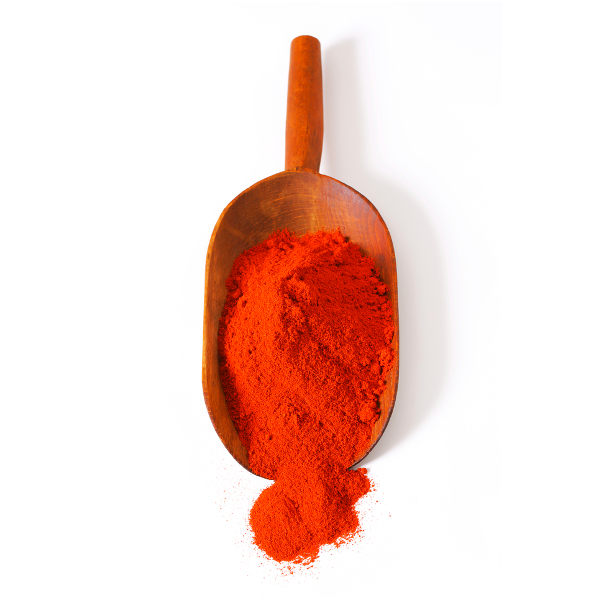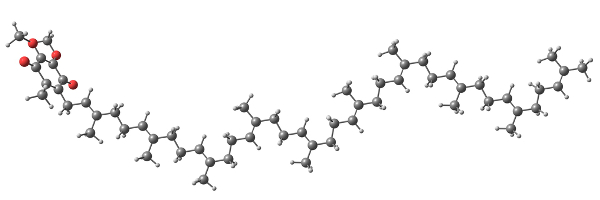Pyrroloquinoline quinine, also known as PQQ, is a redox cofactor and a polyphenolic compound usually found in food plants. So what is PQQ? It is classified as an essential micronutrient because of its usefulness to the body. It is found in the cytoplasm of cells and helps with reduction reactions and oxidation. This compound is amazingly powerful at carrying out redox reactions and can conduct about thirty to five thousand more cycles than the regular Vitamin C.
PQQ can be consumed as a dietary supplement to aid cellular energy production and mitochondrial health and to defend the body against oxidative stress. Its most notable aspect is the fact that it stimulates the spontaneous formation of new mitochondria in the body’s aging cells, and also triggers genes governing mitochondrial protection, reproduction, and repair. While PQQ helps the body in many different ways, here are its main benefits.

Neuroprotection
It is a strong neuroprotective compound that protects cognition and memory in aging humans. Studies conducted have shown that pyrroloquinoline quinine overturns the cognitive deterioration brought about by severe oxidative stress and helps people to perform better on memory tests. PQQ supplements stimulate nerve growth creation and discharge in neuron-supporting cells in the brain. This leads to improved memory function.
Pyrroloquinoline quinone is an anti-aging defense for the top energy-exhaustive organs. Its top capacity as a superior anti-oxidant and cell signaling modulator make it very effective in fighting age-related declines as well as degenerative diseases in the body’s most energy-intensive organs; the brain and heart.
PQQ hinders the gene known as DJ-1 from self-oxidizing. This gene leads to Parkinson’s disease if left unchecked. PQQ also prevents aggregation of alpha-synuclein and defends the nerve cells from the damaging effects of amyloid-beta protein; the compounds linked to Parkinson’s disease and Alzheimer’s disease respectively. Research shows that the mitochondria of a middle-aged person and that of an old person is usually highly damaged. PQQ boosts the health of the mitochondria and reverses this situation.
Pyrroloquinoline quinone hinders oxidative damage to the brain cells following ischemia-reperfusion injury (the oxidative damage and inflammation that is caused by the immediate return of nutrients and blood to tissues deprived of them by a stroke). PQQ also works effectively to protect your brain against any neurotoxicity that is induced by powerful toxins such as oxidopamine and mercury.
PQQ protects neurons by inhibiting the damaging effects of prolonged over-stimulation of neurons usually associated with seizures and neurodegenerative diseases. PQQ interacts with the brain’s neurotransmitter system in a beneficial manner. It protects the neurons by adjusting the NMDA receptor site. NMDA is a very powerful intermediary of “excitotoxicity,” a result of prolonged overstimulation of neurons linked to many neurodegenerative seizures and diseases.
Cognition
PQQ promotes attention, cognition, and memory. People who take a PQQ supplement of 20 mg everyday show improved performance in enhanced memory tests than those who don’t. When PQQ is taken together with coenzyme Q10, it improves the quality of life of old people as well as their mental status. It also prevents or slows down the age-related cognitive decline that occurs among old and middle-aged people.
Cardioprotection
Damage from a heart attack is usually inflicted via ischemia-reperfusion injury. PQQ supplements help reduce the size of the damaged areas resulting from an acute heart attack. Studies carried out showed that this healing process occurs the whether PQQ is given before or after the heart attack. The supplements help reduce the size of the damaged areas and defend against heart muscle dysfunction. This suggests that giving PQQ supplements to a heart attack victim within the initial hours of medical response can offer significant benefits to them. PQQ also helps the heart’s muscle cells to resist severe oxidative stress by enhancing and preserving mitochondrial function.
What are PQQ’s Anti-Oxidant Capacity and Function in Mitochondrial Health?
Mitochondria are very vulnerable to destruction from oxidative damage because they function as the main engines for almost all bioenergy production in a person’s body. Mitochondrial dysfunction is widely recognized by scientists as a major biomarker of aging. Mitochondrial DNA possesses little protection against free radical damage, and therefore depends on antioxidants for protection. PQQ’s potent free radical-scavenging ability gives the mitochondria superior antioxidant protection because of its high molecular stability and ability to transfer energy directly within the mitochondria. Its exceptional molecular stability is unlike that of other antioxidants because it allows PQQ to perform numerous electron transfers without going through a molecular breakdown.
PQQ is very effective in neutralizing hydroxyl and superoxide radicals, which are the two major causes of mitochondrial dysfunction. A study conducted at The University of California at Davis showed that PQQ is between 30 to 5,000 times more effective at sustaining mitochondrial energy production (redox cycling) than other antioxidant compounds such as Ascorbic Acid.
What is PQQ’s Role in Growth and Development?
PQQ’s critical function in growth and development comes from its exceptional ability to stimulate cell signaling pathways that are directly involved in development, function, and cellular energy metabolism. It encourages the natural growth of mitochondria in the body’s aging cells (Mitochondrial Biogenesis). This process helps in improving human health and longevity. Apart from this process, the only other methods known to activate mitochondrial biogenesis in old people are strict caloric restrictions, intense aerobic exercises, and specific medications such as Metformin and Thiazolidinediones (for diabetes). PQQ is, therefore, a crucial compound in enhancing mitochondrial function resulting in better output for the body’s energy cells.
PQQ is an essential compound that plays a critical part in the human body. Without it, a person can experience growth impairment, abnormal reproductive function, and compromised immune status. The immune system is very responsive to low amounts of PQQ and requires it just like other essential nutrients. When the body is deprived of PQQ, multiple defects occur in the body’s immune functions.
Mitochondria dysfunction has been linked to almost all killer diseases of aging, from type 2 diabetes to Alzheimer’s disease, to heart failure. PQQ effectively stimulates mitochondria repair, reproduction, and protection. It also provides optimal defense against neural degeneration and gives powerful cardioprotection to ensure one lives a long and healthy life.
Pyrroloquinoline Quinone and CoQ10
Pyrroloquinoline quinone and CoQ10 have distinctly different functions. PQQ is currently believed to be important biologically because of its ability to signal mitochondrial-enriched cells to optimize the number of mitochondria. Coenzyme Q10 is a cofactor that works within the mitochondria in metabolic steps and is important to respiration and oxygen utilization which lead to ATP production.

– Why is pyrroloquinoline quinone and Coenzyme Q10 bundled?
– And, are PQQ and CoQ10 synergistic?
Pyrroloquinoline quinone and CoQ10 work through distinctly different mechanisms. CoQ10 is absolutely essential for mitochondrial function and abnormal CoQ10 production can lead to a host of health problem. The good news is most of us do not have abnormal Coenzyme Q10 production. Abnormal production has been well-studied in those who must take statin drugs for high cholesterol (metabolic pathways important to CoQ10 productions are related to the body’s cholesterol production). The available data make a good case for CoQ10 supplementation is this situation. There is also evidence to support use with people who have suffered congestive heart failure, irregular heartbeat, and/or angina.
Regarding PQQ, although further research may alter our current perspective, right now it is believed that pyrroloquinoline quinone is not necessary for mitochondrial function per se. However, PQQ does promote increases in the number or amount of mitochondria. Research to date suggests that in non-trained animals, PQQ may stimulate increases in mitochondria by 10 to 20 percent.
So do you need pyrroloquinoline quinone and Coenzyme Q10? The answer is yes and specifically for CoQ10 – absolutely. Will supplements of both or either help? Like all supplements, the answer is maybe. Although completely speculative, those concerned about aging well and/or take statin drugs may benefit more than someone from the general population, as well as someone with a metabolic or genetic defect where stimulating mitochondriogenesis makes a difference.
Regarding this combination of PQQ and CoQ10 to improve athletic performance, there is the promise. However, the value is likely in improved adaptation through recovery (similar to some of the purported benefits of phosphatidyl-serine). CoQ10 alone has pretty much been debunked as an effective ergogenic aid. Study after study has proven that CoQ10 alone does little to increase athletic output:
– Effects of coenzyme Q10 supplementation on exercise performance, VO2max, and lipid peroxidation in trained cyclists.
– Does exogenous coenzyme Q10 affect aerobic capacity in endurance athletes?
– Effects of coenzyme athletic performance system as an ergogenic aid on endurance performance to exhaustion.
There currently is no evidence to support ergogenic benefits from PQQ supplementation either. A successful athlete or a well-trained individual should be able to internally make enough CoQ10 that supplementation lacks a dynamic effect. This is probably one of the reasons why literature on CoQ10 and performance is controversial and inconsistent. Studies on PQQ and performance in athletes have also not been carried out, so it remains difficult to make accurate claims along those lines as well. Improving long-term endurance is a function of adaptation and that is where we see promise.

Michael, hi. I didn’t see that you mentioned the difference in utilization for ubiquinol and ubiquinone (for those over 40). Decline of ubiquinol levels with age is certainly documented. A decent discussion is here, http://www.lifewise.com/files/news/29/New%20form%20of%20CoQ10.pdf.
Thanks for your informative blog on PQQ. I’ve experimented with pyrroloquinoline quinone in conjunction with my qigong and running. Nothing remarkable to report. But I do feel it adds to the toolbox of mitochondrial supplements such as ubiquinol, ALA ALCAR, D-Ribose, etc.
William Croft
Lightfield Systems
Hi William. I touched on it in my last post (Telomeres and Pyrroloquinoline Quinone), but glad to publish your link as well. Knowledge is power! Thanks for sharing and for the kind words.
[…] the section, Pyrroloquinoline quinone and CoQ10, we previously discussed that pyrroloquinoline quinone exists as salts or as complex derivatives of […]
[…] the section, Pyrroloquinoline quinone and CoQ10, we previously discussed that pyrroloquinoline quinone exists as salts or as complex derivatives of […]